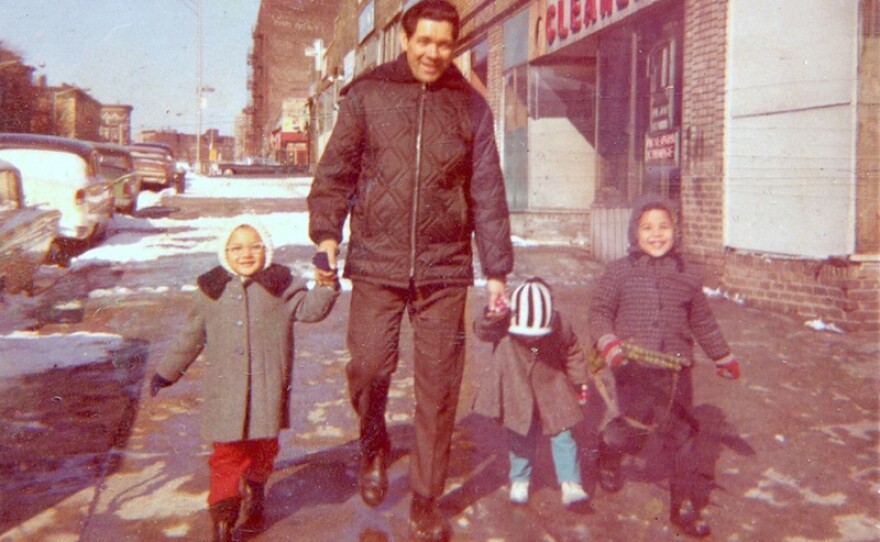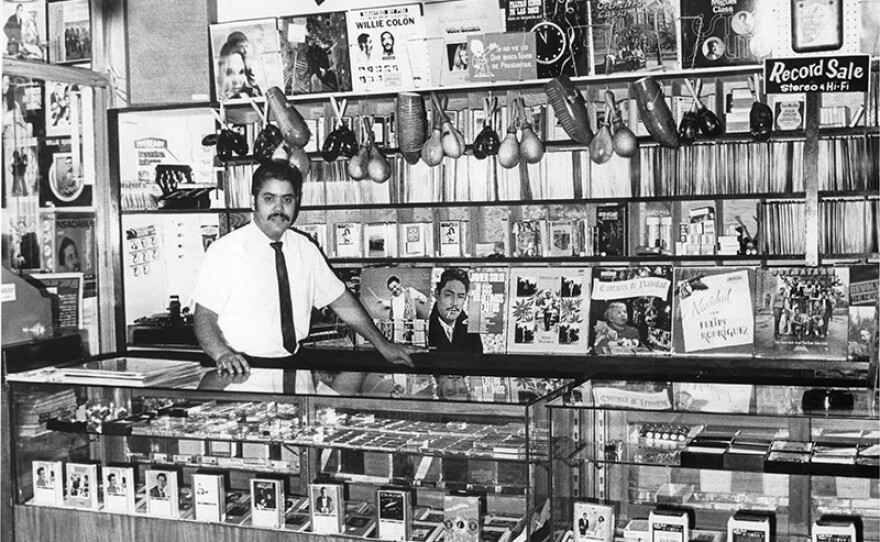—Discover Why the Bronx Burned in the 1970s and Meet Those who Chose to Resist, Remain and Rebuild—
In the 1970s, the Bronx was on fire. Left unprotected by the city government, nearly a quarter-million people were displaced as their close-knit, multiethnic neighborhood burned to the ground, reducing the community to rubble.
While insidious government policies caused the devastation, it was the African American and Latino residents who bore the blame.
Through rich archival and home movie footage, testimonials from retired FDNY firefighters and brass, as well as Bronx historians and community organizers, “Decade of Fire” reveals the real reasons for the devastation and shows what can happen when a community chooses to fight back and reclaim their neighborhood.
A film by Vivian Vázquez Irizarry, Gretchen Hildebran and Julia Steele Allen, “Decade of Fire” premieres on Monday, Nov. 4, 2019 on KPBS.
Co-directed by Bronx native Vázquez Irizarry, who serves as the film’s central character, "Decade Of Fire" confronts the racially charged stereotypes that dehumanized residents of the South Bronx in the 1970s and rationalized their abandonment by city, state and federal governments.
Says Vivian, “Growing up in the South Bronx, I often heard that we were the reason our neighborhoods turned to rubble and ruin. After years of seeing outsiders lay claim to our stories, I needed to tell my own.”

In the film, Vivian speaks to neighbors and historians and digs into city archives, uncovering evidence of years of political policies that led to the devastation, beginning with “redlining” in the 1930s – a policy in which any Black and/or Puerto Rican neighborhood was classified as “declining,” leading banks and insurance companies to step away from investing and insuring.
Slum clearance projects in Manhattan flooded the borough with displaced tenants, over-filling the Bronx’s already decaying housing stock.
While many of the Bronx’s long-time Irish, Italian and Jewish residents fled to the suburbs, Blacks and Puerto Ricans were often denied mortgages.

Many landlords sold their buildings to speculators who found it more lucrative to burn them for the insurance than maintain them.
The city’s financial crisis of the 1970s was the final straw, leading to the closing of a third of the city’s fire companies, primarily in the neighborhoods that needed them most.
By 1977, the Bronx had become the national poster child for urban decay, with images of burning neighborhoods flashed across TV screens as the Yankees played the World Series nearby.
But slowly, out of the devastation, a wave of community activism arose in the Bronx, and grassroots organizations began reclaiming the area, building by building, block by block.
As Vivian says, “Community organizing is what finally stopped the fires.” A 4.4 billion-dollar city-funded program to rehabilitate 100,000 housing units followed, and the early grassroots development organizations finally had the resources to begin massive rebuilding.
But challenges still continue today as speculators look to the borough as the possible next step in the widespread gentrification of New York City. For Vivian and her neighbors, and for people nationwide struggling to hold on to their communities, the fight to resist and remain continues.
“Vivian, Gretchen and Julia’s first feature is ultimately a story of resistance and resilience in a community torn apart by abusive real estate developers and indifferent authorities,” said Lois Vossen, INDEPENDENT LENS Executive Producer. “Drawing on Vivian’s personal experience growing up in the South Bronx in the 1970s, the filmmakers weave together archival footage, news reel, and evocative home movies to tell the empowering story of how a community came together and against the odds reclaimed and rebuilt their neighborhoods.”
Watch On Your Schedule:
This episode will be available simultaneously with the broadcast for streaming on demand for a limited time. Extend your viewing window with KPBS Passport, video streaming for members supporting KPBS at $60 or more yearly using your computer, smartphone, tablet, Roku, AppleTV, Amazon Fire or Chromecast. Learn how to activate your benefit now.
Join The Conversation:
INDEPENDENT LENS is on Facebook, Instagram, and you can follow @IndependentLens on Twitter. #IndieLensPBS
"Decade Of Fire" is on Facebook and Instagram. Follow @decadeoffire on Twitter. #DecadeOfFire
Credits:
Directed by Vivian Vázquez Irizarry and Gretchen Hildebran. Produced by Vivian Vázquez Irizarry. Gretchen Hildebran, Julia Steele Allen and Neyda Martinez. Written by Vivian Vázquez Irizarry and Gretchen Hildebran. Executive Producer: Sally Jo Fifer. Executive Producer by Black Public Media: Leslie Fields-Cruz. Executive Producer for Latino Public Broadcasting: Sandie Viquez Pedlow. Cinematographer: Edwin Martinez.






